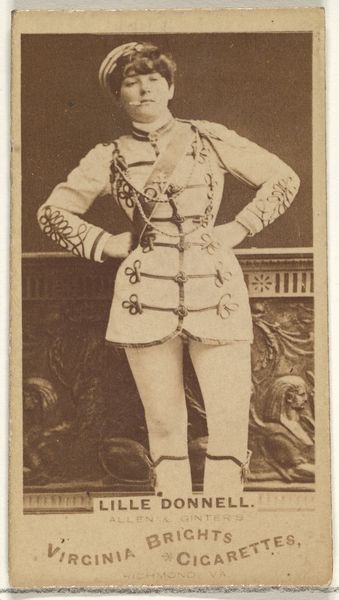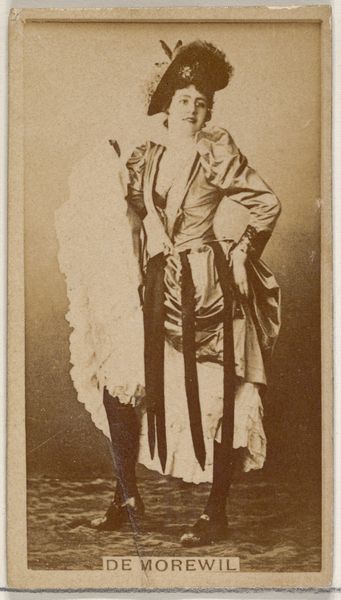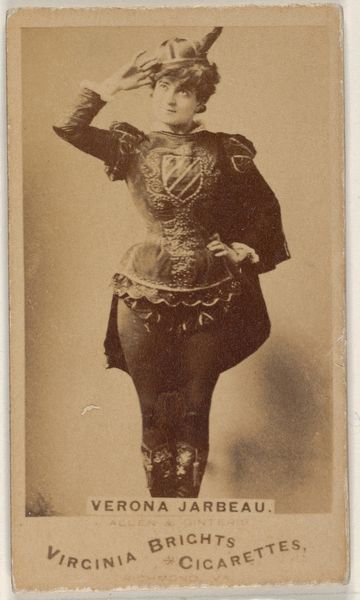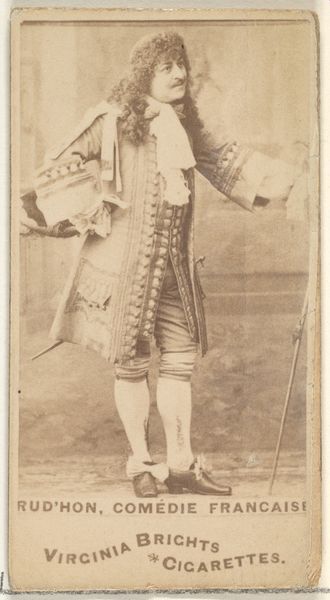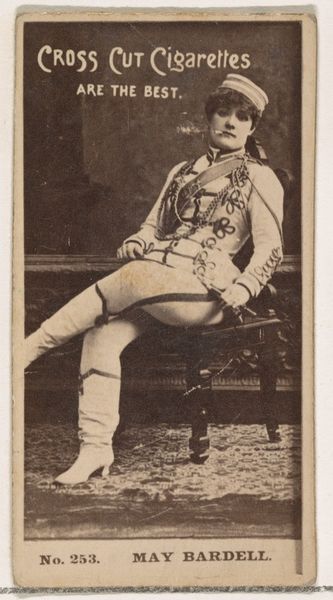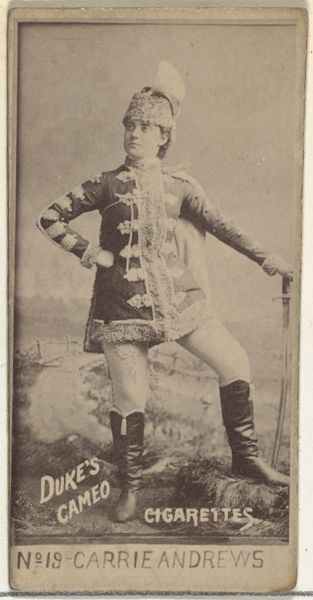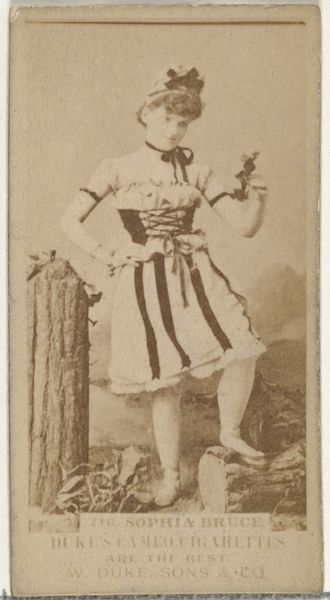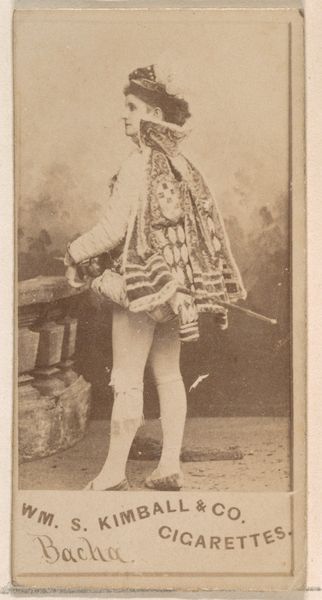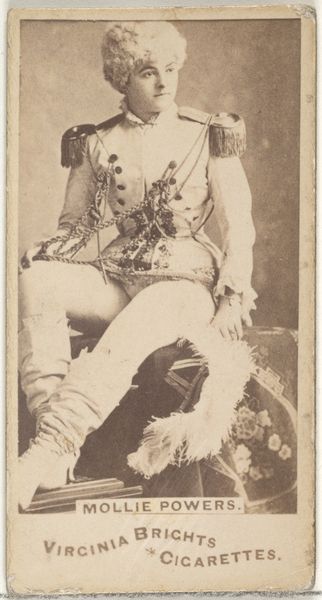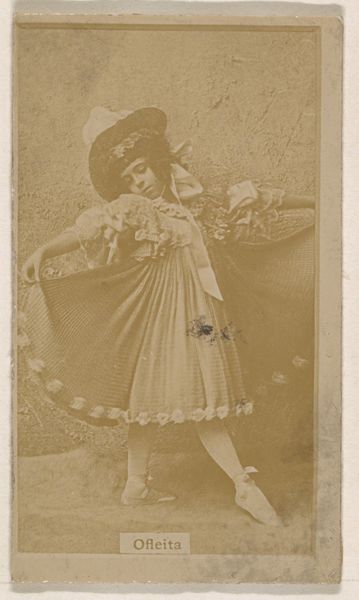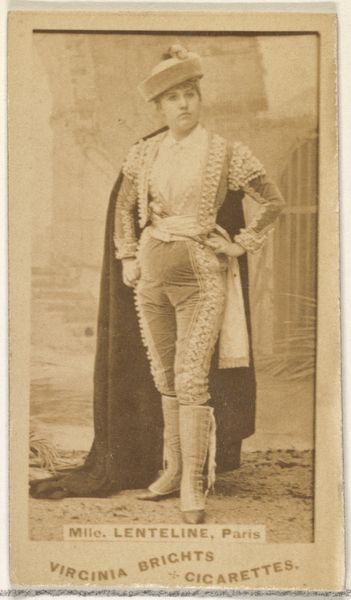![[Clown] by Charles DeForest Fredricks](/_next/image?url=https%3A%2F%2Fd2w8kbdekdi1gv.cloudfront.net%2FeyJidWNrZXQiOiAiYXJ0ZXJhLWltYWdlcy1idWNrZXQiLCAia2V5IjogImFydHdvcmtzLzZhMWJkN2VkLTBjODYtNDgxNS05OTE5LTRiMTVkMTlkYzMxNi82YTFiZDdlZC0wYzg2LTQ4MTUtOTkxOS00YjE1ZDE5ZGMzMTZfZnVsbC5qcGciLCAiZWRpdHMiOiB7InJlc2l6ZSI6IHsid2lkdGgiOiAxOTIwLCAiaGVpZ2h0IjogMTkyMCwgImZpdCI6ICJpbnNpZGUifX19&w=3840&q=75)
photography
#
portrait
#
archive photography
#
photography
#
historical photography
#
19th century
#
men
#
realism
Dimensions: Image: 8 1/16 × 6 13/16 in. (20.5 × 17.3 cm) Mount: 13 5/16 × 10 1/2 in. (33.8 × 26.7 cm)
Copyright: Public Domain
Charles DeForest Fredericks created this photograph of a clown using the wet collodion process, a popular method in the 19th century. The process involved coating a glass plate with light-sensitive chemicals, exposing it in a camera, and then developing it immediately. This technique was particularly well-suited to commercial portraiture, as it allowed for relatively quick and inexpensive production of detailed images. The sepia tone, the result of chemical reactions during development, gives the photo a soft, warm quality. Fredericks was a master of the craft, and his studio became known for its high-quality portraits. In his work, we can consider the labor involved: from the preparation of chemicals to the careful posing of the subject, and the final printing of the image. Photography in this era was as much a craft as an art. Understanding the material and the making allows us to appreciate the skill and effort that went into creating this image, reminding us that even early photography was a deeply material process.
Comments
No comments
Be the first to comment and join the conversation on the ultimate creative platform.


